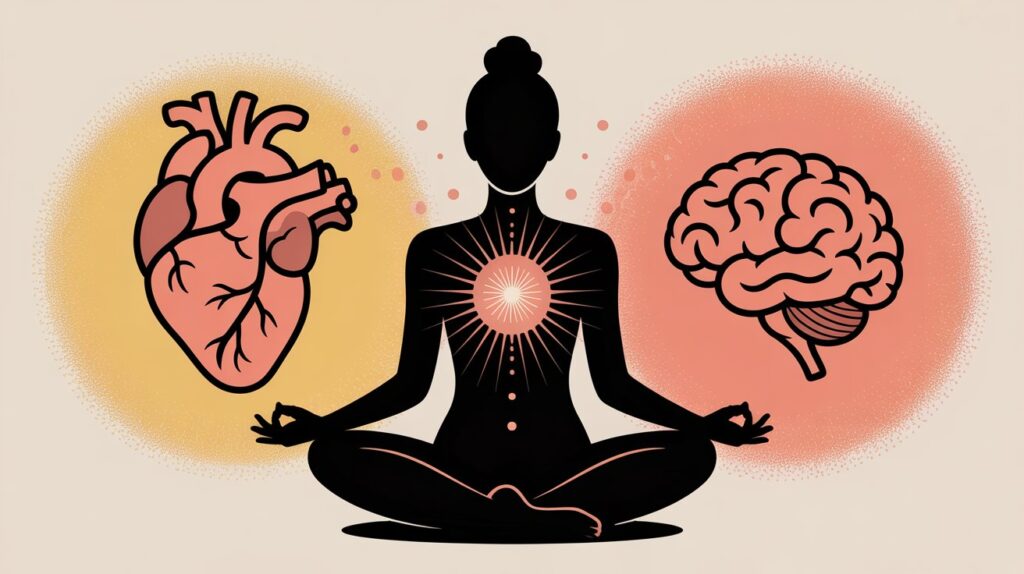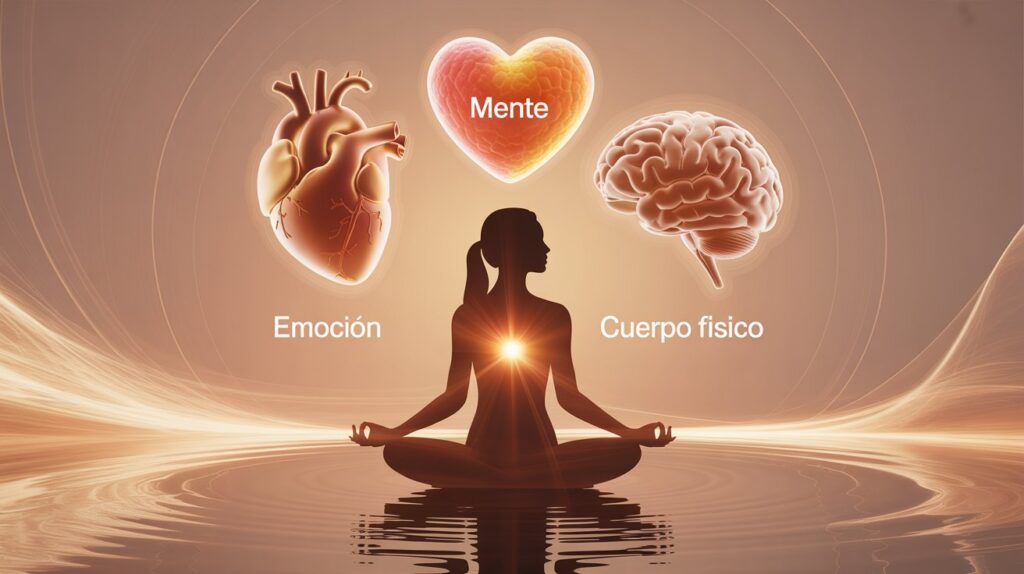
How many times have you started a diet plan or exercise great motivation, only to abandon it after a few weeks? Have you ever noticed that, despite following the directions to the letter, the results are not kept or simply do not come? If you identify with these situations, it is likely that you have experienced in the flesh why the traditional approaches to change fail systematically.
The reality is that the majority of health and wellness programs focus exclusively on the physical: to count calories, follow exercise routines mechanical and measure progress only through the weight, or body measurements. However, a truly comprehensive transformation requires much more than superficial changes in the power and movement.
Your health and well-being is built on three fundamental pillars that must work in harmony: body, mind and emotion. When one of these elements is out of alignment, the whole system is teetering, and the changes that so much effort you took to get quickly fade. Therefore, a comprehensive transformation authentic must simultaneously address these three aspects of your being.
Why fail with the traditional approaches to holistic transformation
The conventional methods of weight loss and improves physical fail because they ignore critical components of human experience. When you focus solely on dietary restrictions and exercise routines without considering your emotional and mental state, you’re building on a foundation fragile.
Have you ever noticed how you eat for anxiety when you go through times of stress? Or, how to lose the motivation to train when your self-esteem is low? These patterns are not lack of will; they are clear signs that your integral transformation requires an approach that is more deep and full.
The disconnect between what you ‘should’ do and what you really feel generates an internal struggle constant that depletes your energy and sabotage your efforts. A comprehensive transformation real eliminates this struggle to align your actions with your emotional needs and mental deeper.
The invisible ties between emotions and physical health
How emotions affect your digestion and metabolism
Modern science has proved what ancient traditions have always known: there is a deep connection and inseparable between your emotional state and your physical health. Your emotions have a direct impact on your digestion, inflammation levels, hormonal balance, and vital energy.
When you experience chronic stress, anxiety, or emotions that are not processed, your body enters a state of constant alertness that affects the production of digestive enzymes, alters the intestinal flora and deregulates the hormones that control hunger and satiety. This mind-body connection is crucial to understand why a comprehensive transformation must include the emotional work.
According to research supported by the American Psychological Association, chronic stress can significantly alter the metabolism, and eating patterns, making the physical changes are much more difficult to sustain without addressing the emotional component.
The impact of stress on your healthy habits
The stress and self-imposed act as saboteurs quiet of your healthy habits. When your mind is constantly pressured by unrealistic expectations or patterns of negative thought, your ability to maintain behaviors nutritious is severely compromised.
The integral transformation recognizes that what is not expressed emotionally accumulates in the body, manifesting as muscle tension, digestive problems, hormonal imbalances, and dietary patterns dysfunctional. That is why it is crucial to address these emotions consciously and systematically.

The three pillars of a comprehensive transformation successful
Mindful eating without restrictions
The first pillar of a comprehensive transformation authentic is to develop a conscious relationship and love affair with food. This goes far beyond follow a meal plan; it is about learning to listen to the signals of your body, recognize your emotional patterns related to food and nourish your body from a place of self-knowledge and respect.
The power aware eliminates the mindset of restriction and guilt that characterizes traditional diets. Instead, it teaches you to make food choices from a full consciousness, considering both your physical needs as well as your emotional well-being.
Movement as personal empowerment
The second pillar transforms the traditional concept of exercise as punishment or duty, making it a tool of personal empowerment. The conscious movement not only strengthens your body, but it also releases emotional tension, improves your self-esteem and connects you with your personal power.
This perspective of the movement as part of your comprehensive transformation allows you to choose activities that you genuinely enjoy and that are aligned with your values and goals of well-being, making the proof is again a natural and pleasant.
Emotional work and self-knowledge
The third pillar is perhaps the most important thing, and that marks the difference between a temporary change, and a comprehensive transformation durable. Through writing introspective techniques of mindfulness and practice of autoescucha, you develop the ability to recognize, process, and express your emotions in a healthy way.
This emotional work allows you to identify the subconscious patterns that sabotage your efforts, heal emotional wounds related to your relationship with your body and food, and build a solid foundation of self-esteem and self-pity that holds all of your changes.

Practical strategies for your holistic transformation
The implementation of a comprehensive transformation requires specific strategies that address simultaneously the three fundamental pillars. The accompanying group provides a safe space to process emotions and share experiences, while the follow-up to emotional ensures that you have the tools necessary to navigate the challenges that arise during the process.
The stress-management techniques, such as meditation and mindfulness, and breathing exercises-conscious, they integrate naturally into your daily routine, creating moments for pause and connection with yourself that strengthen your ability to maintain healthy habits even in challenging situations.
The integral transformation also includes the regular practice of self-observation and record emotional, tools that allow you to identify patterns, to celebrate progress and adjust your approach according to your changing needs.
Conclusion: the path to holistic transformation authentic
A comprehensive transformation authentic transcends the superficial changes in the physical appearance to create a revolution deep in your relationship with yourself. This is not only to have a body that looks different, but to develop a mind that is more free, more energy, more stable and a more loving with all aspects of your being.
The comprehensive approach recognizes that you are a complex and multidimensional, and that your wellness needs go far beyond the calories and exercises. When you work simultaneously with your body, mind and emotions, the changes you experience are natural, sustainable, and deeply satisfying.
The integral transformation is not a final destination, but an ongoing process of growth, self-knowledge and expanding staff. Every step you take in this way you closer to the most authentic and full of yourself.
Do you ready to begin your comprehensive transformation? Don’t expect to be perfectly prepared; the preparation comes in the way. Visit paulinalopassio.com and take the first step towards a life more conscious, balanced and genuinely yours.
Your comprehensive transformation begins with the decision to honour all aspects of your being. The time is now.
